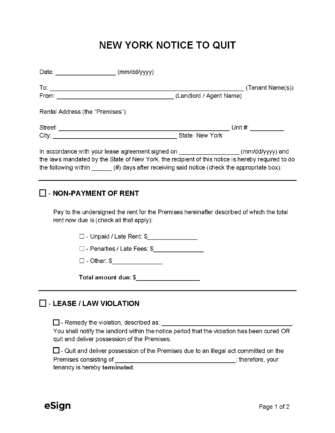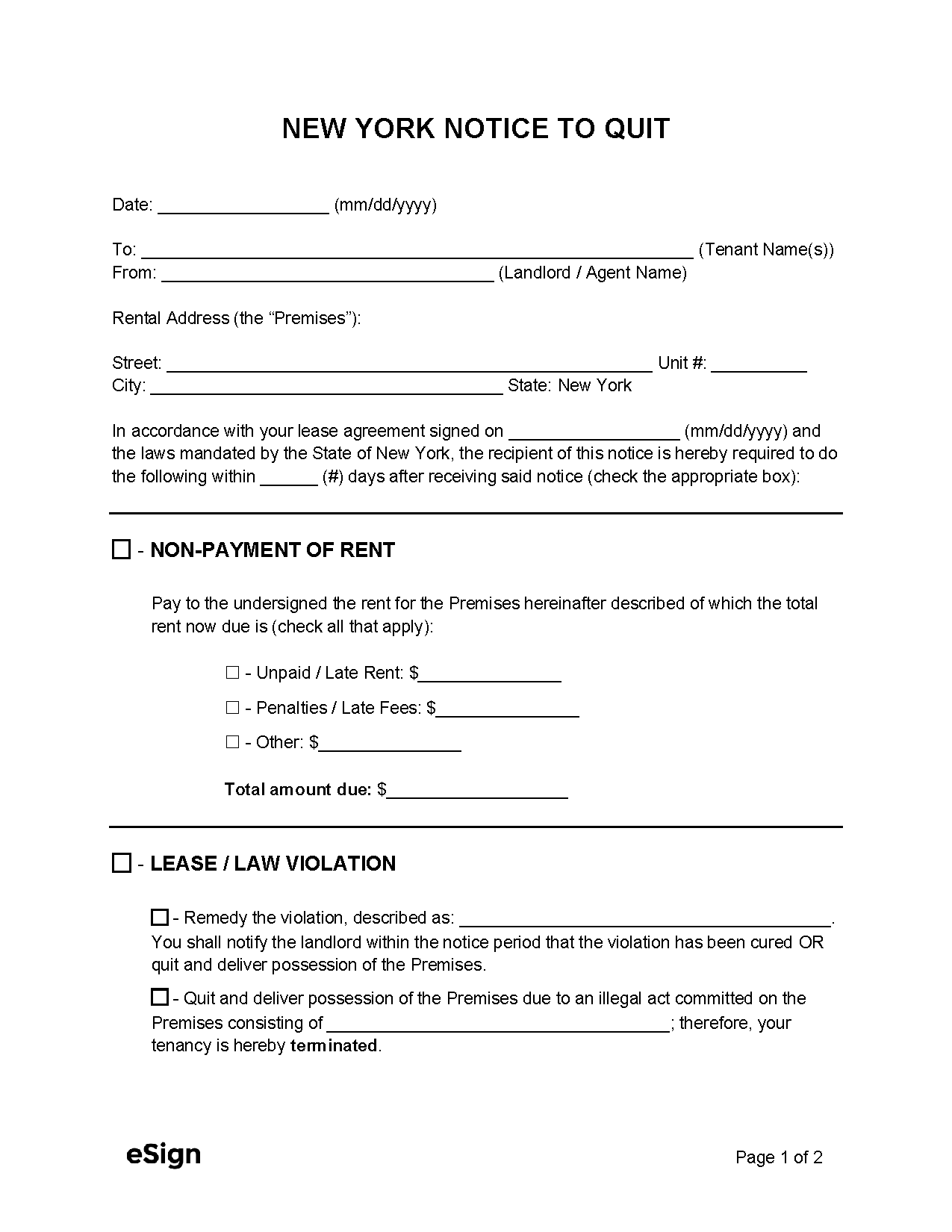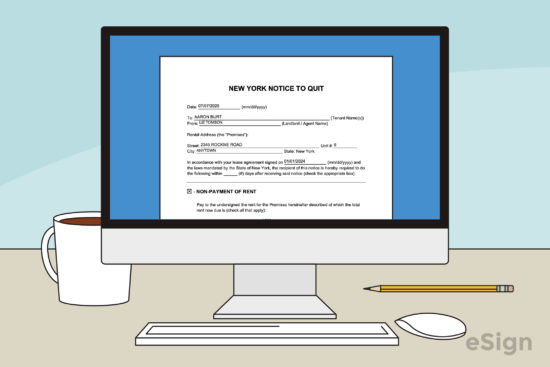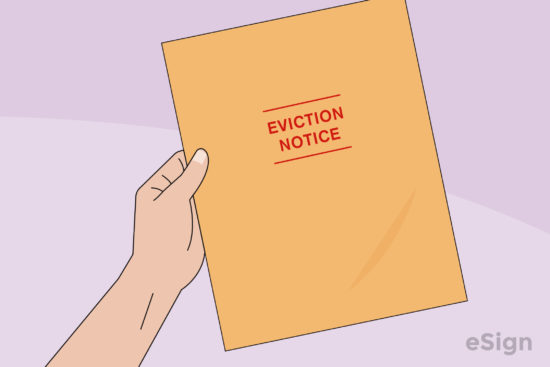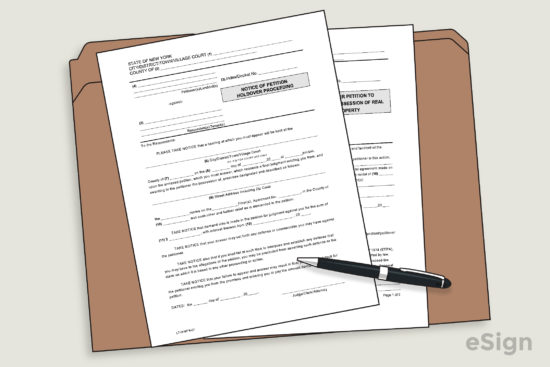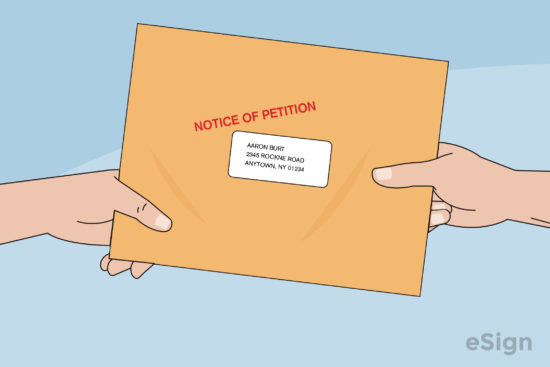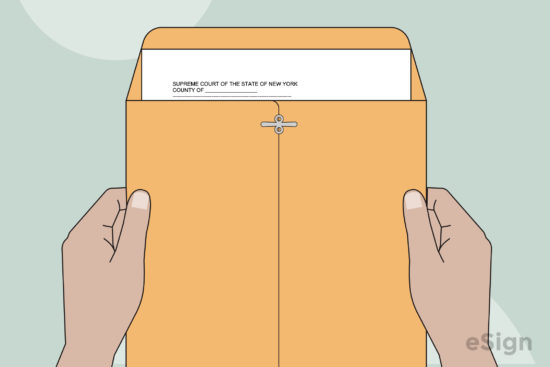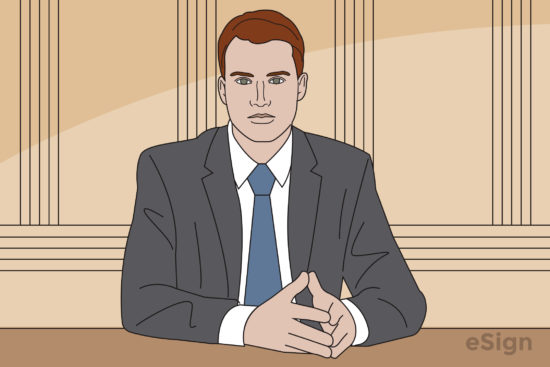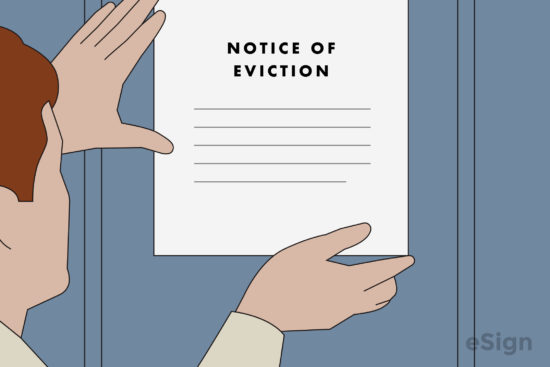Eviction Notices: By Type (5)
14-Day Rent Demand Notice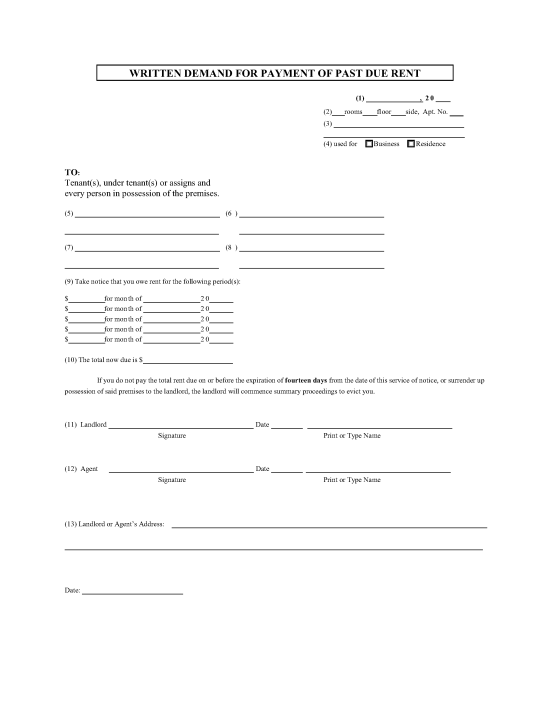 – Gives a tenant who hasn’t paid rent on time 14 days to pay the amount due or move out. – Gives a tenant who hasn’t paid rent on time 14 days to pay the amount due or move out.
Download: PDF |
5-Day Late Notice | Non-Payment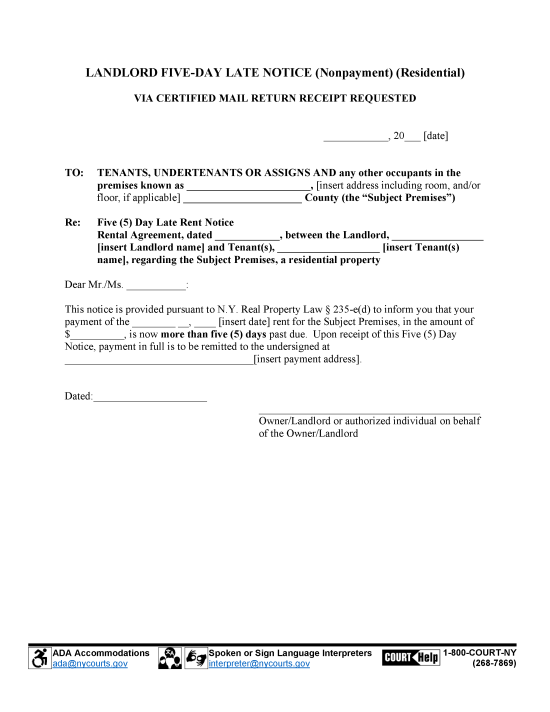 – Tenants must be given this written warning that their rent is late after rent is unpaid for five days. – Tenants must be given this written warning that their rent is late after rent is unpaid for five days.
Download: PDF |
30-Day Termination Notice | Violation of Lease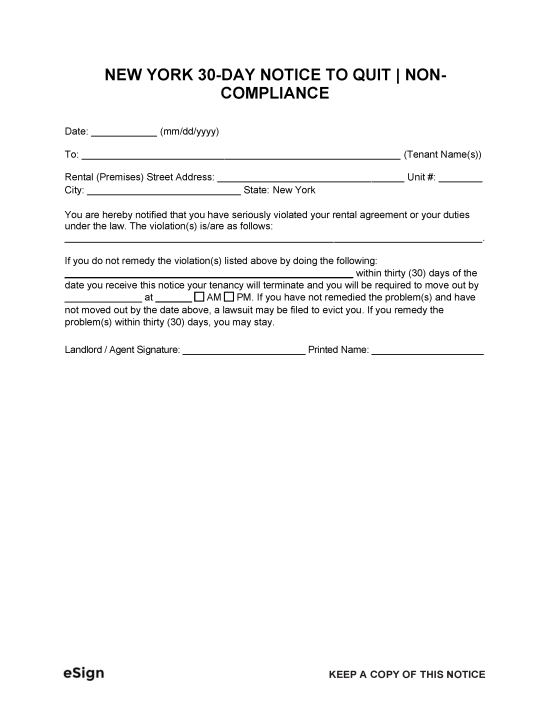 – Informs a tenant that they have breached the terms of their lease and have 30 days to fix the problem or vacate. – Informs a tenant that they have breached the terms of their lease and have 30 days to fix the problem or vacate.
Download: PDF, Word (.docx), OpenDocument |
Eviction Notice for Illegal Activity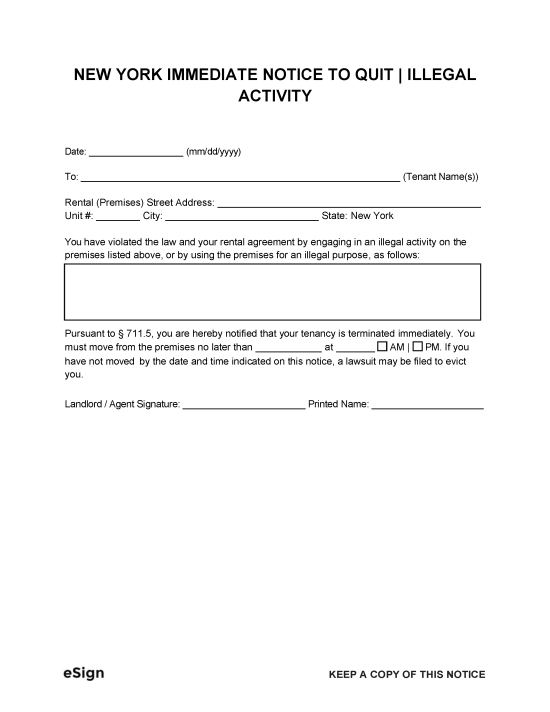 – Informs a tenant that their lease is terminated due to their illegal activity on the rental property. – Informs a tenant that their lease is terminated due to their illegal activity on the rental property.
Download: PDF, Word (.docx), OpenDocument |
Notice to Terminate | Month-to-Month Lease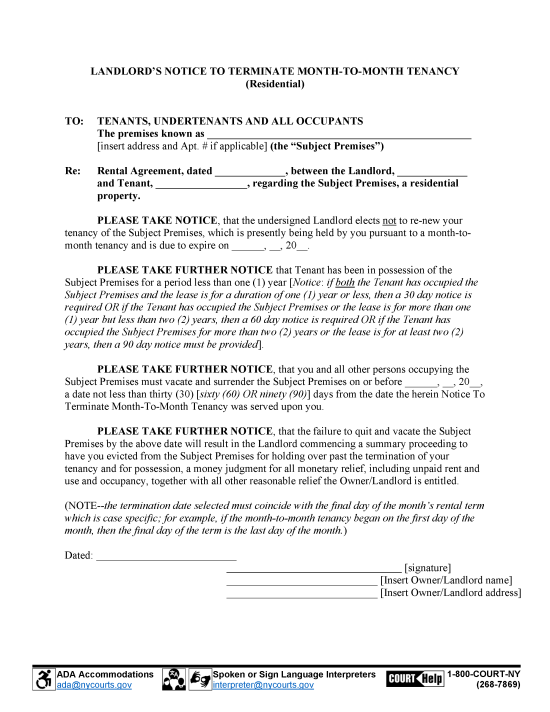 – Gives tenants notice that their month-to-month lease agreement will be terminated. – Gives tenants notice that their month-to-month lease agreement will be terminated.
Download: PDF |
Notice Requirements
- Grace Period for Rent – 5 days.[1]
- Non-Payment of Rent – 14 days.[2]
- Lease Non-Compliance – 30 days or as stated in the lease.[3]
- Periodic Tenancy Termination[4]:
- 30 days for tenancies of less than 1 year
- 60 days for tenancies of 1 year but less than 2
- 90 days for tenancies of 2 years or more
- Illegal Activity – No notice required.[5]
How to Evict a Tenant in New York
The eviction process in New York is complex and varies depending on both cause and jurisdiction. The below guide is simply a general overview of the process.
If the case is for non-payment, there is a unique process that must be followed. All other eviction cases are treated as “holdover” evictions.
Step 1 – Download and Complete the Notice
The landlord begins the process of removing a tenant from their property by serving them with an eviction notice.
- 5-Day Late Notice for Non-Payment
- 14-Day Rent Demand Notice – served after a 5-Day Late Notice
- 30-Day Eviction Notice for Violation of Lease
- Notice to Terminate Month-to-Month Lease
- Eviction Notice for Illegal Activity – not required
Step 2 – Deliver the Notice to the Tenant
State law for the service of legal documents requires that the landlord use a professional process server or another person over 18 years old to serve the notice. Service can be done in person, or by posting on the premises and mailing a copy.
After serving the notice, the server must complete an Affidavit of Personal Service or Affidavit of Substituted or Conspicuous Place Service.
Step 3 – File the Lawsuit
If the tenant doesn’t comply with the notice demands, the landlord can begin an eviction case by completing a Notice of Petition and a Petition:
- Notice of Petition
- Petition – Holdover / Non-payment
- Non-Payment Petition Program – NY State / NYC
Once completed, these forms, along with the expired eviction notice and Affidavit of Service, must be filed with the clerk of the City, Village, District, or Town Court (for properties outside NYC) or the Housing Court (for properties within NYC).
The landlord will then schedule a hearing date that falls between 10 to 17 days from the date they plan on serving the papers on the tenant.
Step 4 – Serve the Tenant
Next, the landlord must have a private process server or other adult serve the Notice of Petition and Petition and other forms on the tenant.
After serving the documents, the server will need to complete another Affidavit of Service to be filed with the court.
Step 5 – Defendant’s Response
The tenant may choose to respond to the landlord’s petition by filing an Answer or by giving an oral Answer to the court clerk.
In a non-payment case, the tenant can get a stay of issuance of the warrant by paying the full amount of rent due plus court fees to the clerk of the court.
For non-payment cases in New York City, the Housing Court provides a Non-Payment Answer Program.
Step 6 – Attend Trial
If the landlord and tenant don’t agree to a settlement, they must appear in court on the hearing date. If the tenant doesn’t attend, a default judgment will be entered in the landlord’s favor.
If the landlord wins a holdover case, the Judgment will state any damages the tenant must pay and set an eviction date. In a non-payment trial, if the tenant is able to pay the landlord in accordance with the Judgment, they can maintain their tenancy.
Step 7 – Evicting the Tenant
When a Judgment is granted in the landlord’s favor, the judge will issue a Warrant of Eviction that orders the local marshal, sheriff, or constable to evict the tenant.
Upon receiving the Warrant, law enforcement will serve the tenant with a Notice of Eviction, which gives the tenant 14 days to move out before they are forcibly removed.
In non-compliance cases, the court will delay the issuance of the Warrant for 30 days, giving the tenant the chance to fix their violation and retain their tenancy.
Court Forms + Resources
Forms
- Affidavit of Personal Service
- Signed by: Server and Notary Public
- Affidavit of Substituted or Conspicuous Place Service
- Signed by: Server and Notary Public
- Answer Form
- Signed by: Tenant and Notary Public
- Landlord Holdover Forms Packet
- Signed by: Landlord, Judge/Clerk/Attorney, and Notary Public
- Notice of Petition: Holdover Proceeding
- Signed by: Judge/Clerk/Attorney
- Holdover Petition to Recover Possession of Real Property
- Signed by: Landlord and Notary Public
- Holdover Judgment
- Signed by: Judge and Clerk
- Warrant of Eviction: Holdover
- Signed by: Judge
Resources
- How Legal Papers Are Delivered
- Small Property Owner Licensee Holdover Petition Program
- Small Property Owner Licensee Holdover Petition Program (NYC)
- Small Property Owner Non-Payment Petition Program
- Small Property Owner Non-Payment Petition Program (NYC)
- Tenant Questions & Answers in Holdover Proceedings
- Tenant Questions & Answers in Non-Payment Eviction Cases
